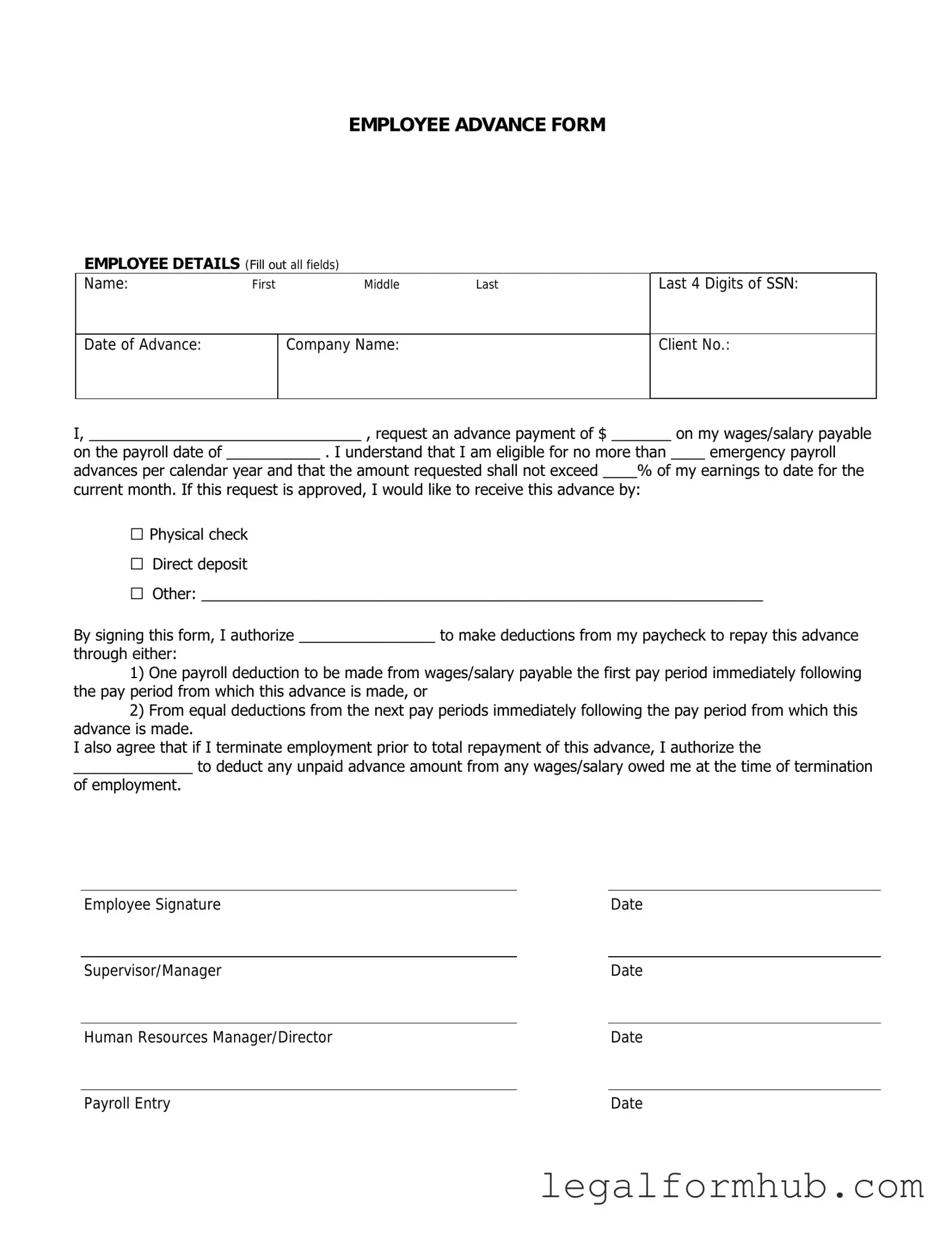The Employee Reimbursement Form is similar to the Employee Advance form in that both documents are used to manage financial transactions related to employee expenses. Employees submit these forms to request funds or reimbursement for expenses incurred while performing their job duties. Both forms require details such as the purpose of the expense, the amount requested, and supporting documentation to ensure transparency and accountability in financial dealings.
The Travel Expense Report serves a similar function as the Employee Advance form, focusing specifically on expenses incurred during business travel. Employees use this report to outline their travel costs, including transportation, lodging, and meals. Like the Employee Advance form, it requires accurate documentation and justification for the expenses claimed, ensuring that the company can track and manage travel-related expenditures effectively.
To further facilitate financial transactions within the organization, a comprehensive understanding of the various forms is essential. For instance, employees looking to acquire the necessary documentation for a vehicle sale can benefit from the Fill PDF Forms, which provide a useful resource for ensuring all details are duly recorded and legal requirements met.
The Purchase Order is another document that shares similarities with the Employee Advance form. While the Employee Advance form requests funds for personal expenses, the Purchase Order is used to authorize the purchase of goods or services on behalf of the company. Both documents require clear descriptions of the requested items and the total amount, facilitating budget management and financial planning.
The Expense Claim Form is akin to the Employee Advance form, as it allows employees to claim reimbursement for out-of-pocket expenses. Both forms require employees to provide details of the expenses incurred, including dates, amounts, and the nature of the expense. The primary difference lies in the timing of the request, with the Expense Claim Form being used after the expenses have been incurred, while the Employee Advance form is used to request funds in advance.
The Vendor Invoice is also similar to the Employee Advance form in that it involves a request for payment. Vendors submit invoices to request payment for goods or services provided to the company. Both documents require clear details about the amounts owed and the nature of the transaction, ensuring that financial records are accurate and up to date.
The Budget Request Form bears similarities to the Employee Advance form as well. Employees can use this form to request funding for specific projects or initiatives. Both documents require justification for the requested amounts and a clear outline of how the funds will be utilized. This ensures that financial resources are allocated effectively and align with the company's goals.
The Payroll Advance Request Form is closely related to the Employee Advance form, as both involve requests for financial assistance. Employees may use the Payroll Advance Request Form to request an advance on their upcoming paycheck. Similar to the Employee Advance form, this document requires the employee to specify the amount requested and the reason for the advance, promoting responsible financial management.
Lastly, the Grant Application Form shares similarities with the Employee Advance form in that both documents request funding for specific purposes. Employees or departments may use the Grant Application Form to seek financial support for projects or initiatives. Both forms require detailed descriptions of the intended use of funds and justification for the request, ensuring that resources are allocated to projects that align with the organization's objectives.
